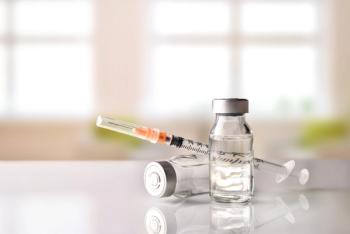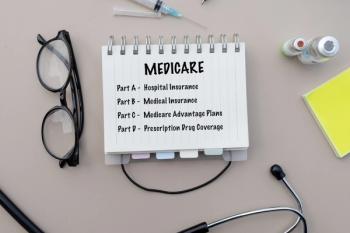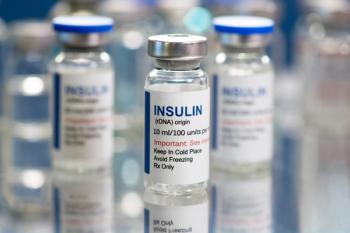
Video: Majority of Pharmacists Say They Are Being Impacted by Drug Shortages
Michael Ganio, PharmD, MS, senior director of pharmacy practice and quality at the American Society of Health-System Pharmacists (ASHP), sat down with Drug Topics to discuss the current drug shortages and how pharmacists are dealing with them.
The American Society of Health-System Pharmacists (ASHP) recently conducted a survey of its members to assess the negative effects of ongoing drug shortages. Over 99% of respondents said they are experiencing drug shortages and over half said that shortages of cancer medications were critically impactful.1
Drug Topics sat down with Michael Ganio, PharmD, MS, senior director of pharmacy practice and quality at ASHP, to talk about the results from the survey and what proposals ASHP has put forward to help alleviate current and future shortages.
Drug Topics: What are some of the reasons for why drug shortages occur?
Michael Ganio, PharmD, MS: There are a lot of reasons, actually. One of the primary reasons we've been hearing about lately is increase in demand. The ADHD medication shortage seems to be primarily driven by demand. The weight loss medications, like Wegovy and Ozempic, seem to be driven by demand. There's a shortage of a form of injectable penicillin because of increased syphilis rates in the US, so that's increasing demand causing that shortage.
But those are actually not normal causes of shortages. We have a little over 300 shortages that we're tracking within the ASHP drug shortage database. Probably, close to 300 of them are due to some sort of hold up with manufacturing, whether it's further upstream and raw materials, it's typically a quality problem with the manufacturing. That doesn't mean there's a problem with the product itself, but it's a process or a piece of equipment, something that needs to be addressed, and it can hold up production. It can be release testing that failed for some reason, or can result in a recall. But that tends to be the main cause of a lot of shortages.
There are a few other things too. We've seen natural disasters, like Hurricane Maria, cause shortages. More recently, we're still sort of waiting to hear the full impact of the Rocky Mountain facility that was struck by a tornado, the Pfizer facility that was in Rocky Mount, North Carolina. So, anything that disrupts manufacturing or distribution can lead to a shortage.
Drug Topics: What are some other drugs that are being affected by the shortages?
Ganio: So, like I said, those are outliers as far as the cause. But the big shortage right now that seems to be getting a lot of attention is the chemotherapy drugs used to treat cancer. And they, justifiably, they're getting attention. We're talking about medications that are used across various types of cancer, both blood and solid organ tumors. You have a lot of different types of oncologists and hematologists who are trying to work together and figure out, "Which patients should we prioritize? Where should we cut down doses? Where should we switch to alternative regimens?" They're having a broad impact because they are used in so many cancers, and that can have actual impact on outcomes.
The ADHD meds, another one, that's a very impactful shortage, because patients rely on these medications. They have to go monthly to get a refill. Your day-to-day functions can be effected if you're not able to get those medications and switching can take months to titrate to the correct dose. It's not like some of the other shortages we've seen where we'll just switch to an alternative and move on.
Another demand driven shortage example is amoxicillin from over the last winter, due to the increase in respiratory viral infections and other types of infection. You find an alternative Augmentin, or some other antibiotic, get that prescription taken care of and you move on. But with these chronic medications, like ADHD meds or with medications that don't have an easy alternative, like the oncology drugs, you're now talking about affecting patient clinical outcomes. That's the hard part with the oncology drugs, as you're talking about probably changes in overall survival and potential in cure rates. I know we don't talk about curing cancer often, but when you have to move from a first line to a second line of treatment, or a second to third, whatever it might be, you're talking about reduced efficacy, maybe increased side effects or increased cost or some combination of those. We know the shortages are having a real world impact.
Drug Topics: ASHP recently conducted a survey on how the drug shortages are affecting pharmacists. What were some of the key findings from that survey?
Ganio: Well, one of the key findings that probably isn't surprising to any pharmacist is that almost 100% of our respondents said that they were affected by shortages right now. About a third said that those are critical in some way, they are delaying patients from treatment. These are having an impact on patients. What we tend to see, and what you'll see further on in the survey, is how we manage shortages. We can change our buying practices to either different concentrations, different packages or vial sizes, find 503b outsourcing facilities, secondary wholesalers, you name it, we'll find a way to get the drug. A lot of times the patient care is not affected at all, they still get the same drug. Sometimes it's a slight clinical impact, like switching them to a different route of administration—"We can't get the intravenous form, but we have the tablets. [We] would prefer to keep you on the IV forum until whenever the benchmark is hit, but we're going to have to switch you to the oral sooner." That's how we manage a lot of these shortages. The survey results show that the shortages are being managed the same way as others. The other key findings that stood out, the antineoplastic drugs, as I mentioned, almost 60% of our respondents were in some way compromising patient care because of the shortage.
Something new for the survey that we wanted to know a little bit more about was the impact on drug budget and labor budget. We found that the labor budget for most respondents was somewhere between a 5% to 10% increase in the annual labor budget. We couldn't put a fixed dollar amount on that. It's just too hard to ask a department to pull that information together. It was easier to do this in a relative term, you know, “How much more money do you think you're spending?” And then the drug budget the same thing. So, between 6% and 15% additional drug budget and that might be because the 503b products are more expensive. It may be that you're now buying alternative contracts, or you're buying something that's a little bit more expensive. It could be, hopefully not, but buying from sources that are marking up prices significantly. But now we know a little bit of the financial impact that the shortages are having.
The final component, again, this is new. But we continue to hear, as I mentioned, quality is one of the root causes of shortages, that was in an FDA report in 2019, there's no good public recognition of investment in quality. And actually, as a purchaser, we have no insight into quality. You can look at FDA inspection reports, you can look at warning letters, they're not timely, and it's hard to link a drug that's made at that facility to the facility inspection report. A lot of times you cannot trace a drug product to where it's actually made. But 87% of respondents recognized that manufacturer quality is important and 59% said that they would prefer to buy a product from a facility that has met some sort of predetermined quality standard, whether that's through a third party, or whether that's through the FDA's own quality maturity management pilot program. If someday they decide to make the results public and some sort of scoring system. But there is an interest in that, which is good because that, you know, a lot of the things that we've talked about with Congress and with FDA on increasing notification for shortages or allowing 503bs to do more compounding during shortages, none of that's getting at the root cause.
The final question, “Are you willing to spend more money on a product that has met this quality standard?”, there was interest in spending about 5% to 10% more on products that do meet that standard. I think that's the important thing, because we keep hearing about this race to the bottom and there's not enough margin on these products. But I think just paying more for them doesn't get at the root cause. We need to know that if we're paying more for them, we’re paying for investment in quality systems, not paying for something that's going to increase dividends or go into shareholder pockets. That’s one of the solutions we see, long term, for fixing this problem. It's good to see that our members are willing to recognize that quality is important and needs to be addressed.
Drug topics: What are some other proposals that ASHP has put forward to help alleviate the drug shortages?
Ganio: This is one of them, getting some sort of public rating system so that buyers know what we’re buying and supporting with our dollars, as far as the resiliency of the supply chain. A couple of others, long term contracts. That's another thing with quality investment, it's not just the margins. It's also when contract negotiations come up again, if you miss out on that contract, you might not be making that product again in a year. So, long term contracts can help stabilize that demand and it gives the manufacturer guarantee that I'm going to be making this product for the next five years. I need to go ahead and make some investments in that production line or that facility. That can help stabilize some of the market influences on decisions to invest in the facilities.
As I noted earlier, it's not just quality that causes shortages. Natural disasters, demand, whatever it might be, the creation of a buffer inventory could really help address any cause of shortages. When I think of a buffer, I'm trying to distinguish that from a stockpile, so I think of a stockpile as something sitting in a warehouse collecting dust. This is not that, this is a 3 to 6 months of supply sitting in, whether it's on the pharmacy shelf, if they have the logistical ability to manage that and the space, great, if it's a wholesaler, this is what wholesalers do. They manage inventory. If a wholesaler can hold 3 to 6 months of inventory, it doesn't have to be everything, just some essential medicines. Then if you do have a tornado, if you do have something that damages infrastructure, if you have something like a hurricane, there's supply already distributed in warehouses that can be depleted before patient care will be impacted. That gives the manufacturers time to recover. It gives other manufacturers time to step in and increase production if they have that ability. It gives 503bs a chance to jump in if they think they can get in and develop a formulation and help alleviate the impact. So, that buffer supply is another proposal we think can help with a lot of shortages.
Reference
1. New ASHP Survey: Critical Shortages of Cancer Drugs Pose Dangers to Patient Care. News Release. August 10, 2023. Accessed September 14, 2023. https://news.ashp.org/News/ashp-news/2023/08/10/new-ashp-survey-critical-shortages-of-cancer-drugs-pose-dangers-to-patient-care
Newsletter
Pharmacy practice is always changing. Stay ahead of the curve with the Drug Topics newsletter and get the latest drug information, industry trends, and patient care tips.













































































































































